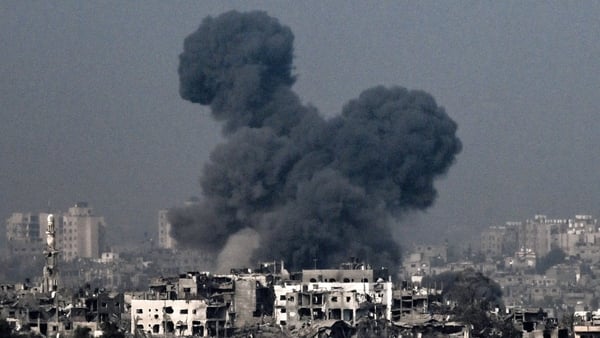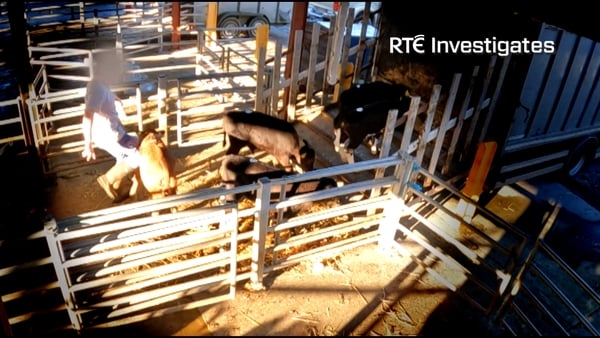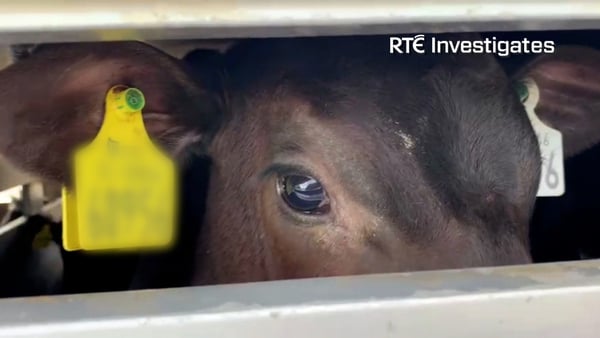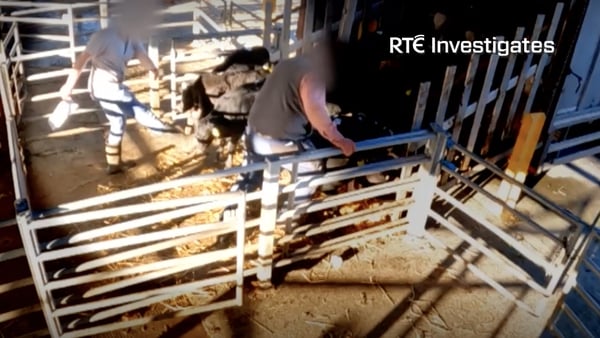The Irish dairy industry constantly claims it is the most carbon efficient in Europe. It's a big boast, however it is one that some climate scientists say is not true.
"Ireland is about the third worst for dairy efficiency," says Paul Price, a leading Irish policy researcher on climate.
Mr Price says the constant boast of carbon efficiency from the sector is based on data that is "very dated." How that data was interpreted by the EU’s Joint Research Centre has also been questioned.
The claim is repeated by industry in policy document after policy document.
What few point out is that a second study interrogating the very same data from 2004, puts Ireland at the bottom of the efficiency scale for dairy in the European Union.
The saying 'lies, damn lies, and statistics’ is often used to dispel or discredit those who quote statistics to make or break an argument, but there are some stats that can’t be ignored.
Time and again, predictions from State bodies around the expansion of food production have turned out to be way off.
Paul Price says that in helping to formulate the Food Harvest 2020 plan to grow the food production sector, Teagasc predicted there would be a 7% increase in emissions but it turned out to be 14%.
So, what are key problems when it comes to climate change and dairy production, and can they be fixed?
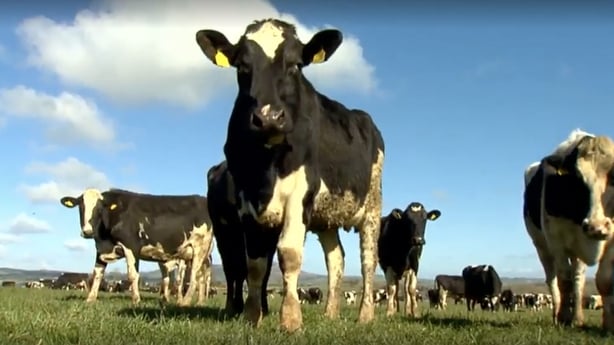
First, some facts.
1. Since diary quotas were lifted in 2015, 20% of the fish kills detected by Inland Fisheries Ireland were caused by what the agency calls 'agricultural practices', that’s 42 of the 209 fish kills in that seven-year period.
2. There has been a recorded increase over the last number of years in greenhouse gas emissions from the agricultural sector.
3. When it comes to river and water quality, "agriculture is the biggest pressure."
That is not a subjective claim, it’s based on science, and it’s backed by the Director-General of the Environmental Protection Agency, Laura Burke.
Let’s focus first on water quality.
Water Quality
Ms Burke says it is now an accepted fact in the farming community too, even though a minority continue to deny it, "for example, in Food Vision 2030, where the challenges with regard to water quality, increased greenhouse gas emissions and ammonia emissions, are all recognised as challenges that need to be addressed."
Listening to Laura Burke, you’d believe that farmers have recognised they need to do much more to address issues like the impact on water quality of the expansion in dairy in recent years.
But another arm of the state Teagasc, puts a different spin on it.
"We've turned the corner in terms of water quality," Teagasc Director of Research, Professor Pat Dillon, told RTÉ Investigates.
He and others in the farming community constantly reference a study from West Cork which shows water quality actually improved in one dairy heartland.
Prof. Dillon says it’s evidence that the situation is not all doom and gloom. The study is the chief calling card for many in the dairy industry.
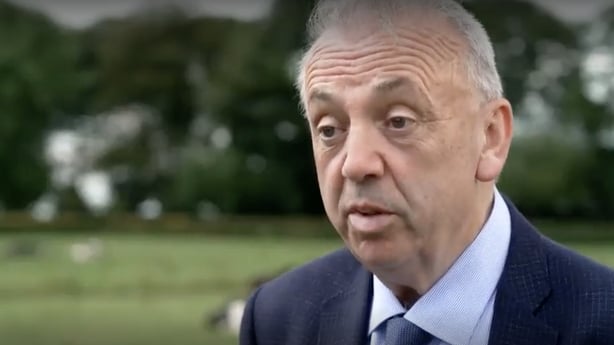
Pat McCormack of the ICMSA brings it up almost instantly when we begin discussing the impact of dairy on water quality.
"We have seen in West Cork, that catchment area where there has been significant dairy expansion. We have seen that water quality can be maintained and indeed improved with the most intensive farmland and farming practises in Ireland."
But the EPA isn't buying it.
Laura Burke acknowledges that many in the sector are trying, but again says science gets in the way of the West Cork success story.
"On a farm-by-farm basis, there can be absolutely exemplary practices, really good practises that are second to none." she says.
"With regard to some of the farms talked about in West Cork, part of that study has certainly shown that you can have reduction, for example, in nitrogen, but the nitrogen level is still at too high a level."
"The other thing we'd say is, when you look again at the overall Cork catchment area, 69% of the estuaries are in unsatisfactory condition. What does that mean? That means you see things like you see algal blooms and those are as a result of agriculture pressure, along with other pressures."
Despite the best efforts of many farmers who work hard to reduce the environmental impact of their activities, the impact is real, indisputable and often visible.
Clearly, the debate when it comes to the impact on water quality is divided, and that no different when it comes to emissions.
Read more: 61 hours: The journey endured by thousands of Irish bull calves
Emissions
Paul Price says that from 2000 to 2010 Ireland’s dairy sector, under quotas, showed steady milk production levels with less fertiliser being used and less emissions.
That, he says, is an "exemplar" of what quotas can achieve.
Fast forward to the 2010 to 2023 period and it is, he says, an example of how intensification impacts water and air pollution.
In effect what he is saying is, when productivity gets priority, food production profits grow, and the environment suffers.
If that’s the science, who’s to blame for what’s happened? Some might conclude at this point, that everyone is farmer bashing.
Paul Price is certainly not. He couldn’t be clearer, "it's not farmers’ fault."
He points the finger of blame at Government policy, a policy drafted, supported and designed by the leading State agencies that advise Government.
Mr Price says "farmers were basically policy directed this way, and farmers fitted in as they will always do, because they are smart people. They will fit in with whatever the system and market is set up to do. And if the market is set up to do intensive grass-based agriculture, and for dairy in particular, they will maximise and go into that in a big way."
Yet for Peter and Paula Hynes it doesn't feel that way, they farm in Ahearla outside Cork City.
"There's just people blaming the farming community for everything," says Paula. "And it's taking its toll on a lot of farmers, especially when they are putting in the effort to change things."
In some people’s eyes, Paula and Peter Hynes could be the poster children for dairy expansion, the abolition of quotas saw them expand by a staggering 300%.
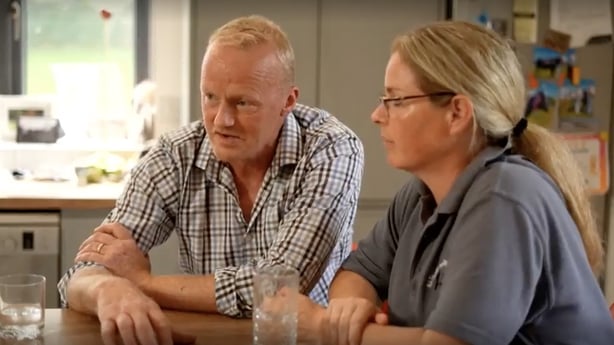
The Hynes' have increased clover in their grass to help reduce emissions. They are amongst the first in Ireland to feed an additive to reduce methane emissions. Their aim is reducing chemical fertiliser use by 40%.
In many ways, they are an exemplar, of how the farming industry can adapt.
Sitting at their kitchen table, Peter addresses the expansion, he probably reads my face when he discloses how much they have grown.
He also probably predicts the next question, 'all that expansion can only mean one thing, more emissions.’
He heads my question off at the pass, "Yes, we expanded 300%, but we've expanded our milk production by 700%, which means the cows that we're milking now are a lot more efficient than the cows we were milking in 2014."
He concedes that, "there is a lot of figures that go against dairy expansion" - to say otherwise is to colour and spin the reality - but he is quick to draw on the positives.
"We have a lot of rivers and streams running through the farm and it's about being more responsible when you're spreading your slurry and your fertiliser and not going close to waterways, not spreading when there's heavy rain coming. We also farm alongside nature, our farm has 20 beehives on it, there's a half a tonne of honey coming off our farm every year."
But could the very basis of Ireland’s green image, grass fed dairy, actually be the problem?
Bord Bia boasts that participants in its ‘Bord Bia Grass Fed Standard Scheme’ are fed on a 95% grass diet. They 've researched the benefits of that clean and green too, saying that 60% of consumers in key markets say they would pay more for grass fed dairy products.
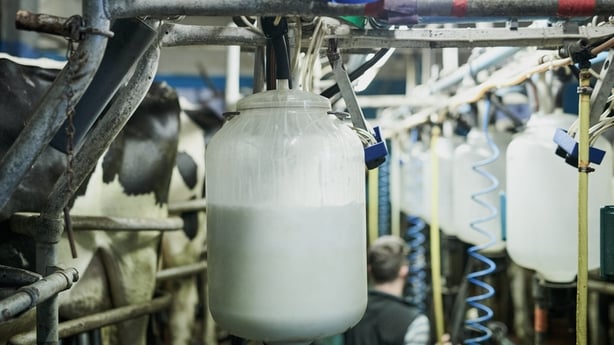
Paul Price has studied the impact of various ways of feeding cattle, he's not convinced grass fed is the positive that many think it is.
"Grass is a high protein feed, and it has a higher concentration of protein than cattle require. And so what happens is the excess is excreted, and that means it is inherently inefficient," he says.
He doesn’t endorse Ireland turning away from its grass fed system, but he references Denmark where growing nitrogen emissions became a problem, as they are in Holland now.
In Denmark, Mr Price says, "they went away from using fertilised grass production into using grain and importing protein foods. I’m not saying that's a good idea but that is what they've done. And as a result, they have decreased methane emissions."
He says grass is good, rather intensifying the grass fed system is the problem. "Intensive pasture production is by far is the worst in terms of global warming," he says.
His comments may be controversial, but he quotes multiple studies to support his views.
Unsurprisingly, the Director of Research in Teagasc, Prof. Pat Dillon disagrees.
"We have a very sustainable system in Ireland," Prof. Dillon says.
"If we look at the expansion to today, the [environmental] footprint of that milk has significantly reduced. So, we're producing milk much more efficiently, with a much more lower carbon footprint. We applied best genetics, best grazing management."
Nevertheless, he agrees the dairy boom has had an environmental impact.
"Yes, I'd accept total emissions went up because the increase in expansion was greater than the increase in efficiencies," he says.
Read more: Find out how Ireland is being powered today on RTÉ's climate focus page
Potential Solutions
In all this it’s easier to find a problem, than a solution.
Turning an entire industry towards greater climate efficiency targets is no small ask.
Farmers insist that, in the main, everyone is on side. But those changes will cost money.
Diary incomes have hit an all-time high, the average dairy farm income in Ireland last year was €151,000 before tax, up 53% on the year before.
The ICMSA’s Pat McCormack insists the need for change has registered, "the practices that have been carried out on farms in 2023, they are as a result of the science of 2022 and indeed '21 and ‘20," he says.
"But it will take a period of time for that practice to deliver results, and very often people don't seem to understand that, or don't seem to have a willingness to wait for that."
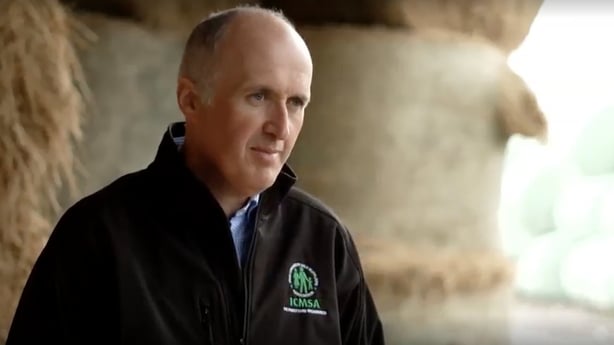
There is another reality, the Irish farming community is not an equal one.
The low-emitting tillage sector is highly profitable, albeit income levels are half what diary are. But the beef sector is struggling.
It's virtually impossible to make a living on beef alone and those who do are large scale.
That presents issues, there is no simple answer, milk is profitable but polluting, but also sustaining rural communities. It’s a difficult circle to square, but is it resolvable?
Professer Thia Hennessy thinks it is. She is the Chair of Agri-Food Economics at Cork University Business School.
"There are some very difficult questions for the agricultural sector to face. We really have a sector of two halves. On the one hand, we have the dairy sector, which is expanding and growing and is very profitable, and we have other livestock sectors that are not as profitable and are stagnating, if not declining."
"I think an overall collective approach to what we need to do in the sector really needs to be determined by how the sector can meet its greenhouse gas emission targets and still, I suppose, deliver a livelihood for farmers and for those employed in the agri-food processing sector."
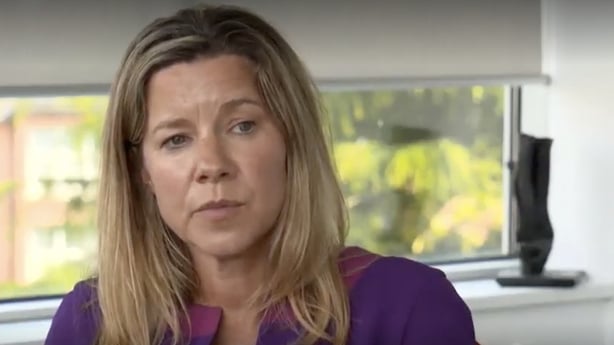
But, she says, to achieve that a reduction in the herd will be needed.
"We really need to look at how we can meet our climate change targets. That's about rolling out all of the mitigation strategies, it's about looking at animal numbers. We can adopt technologies to make us more carbon efficient, but if we keep having more and more animals in the country, we still won't meet our carbon commitments."
"I think it's about looking at the policies we can put in place to make the production of food more carbon efficient, but also to scale back the number of animals we have in the country as well."
Increasingly there is scientific consensus that reducing herd numbers is the only way to meet our obligations. Granted, not everyone agrees.
This all raises one key question: how could Government policy to expand the dairy herd have been pushed in the first place? There were obvious and real warnings were being given by those helping formulate the policies from the start.?
Were agencies like the Environmental protection Agency ignored?
We asked the Director General, Laura Burke.
"I've been with the agency for just under 20 years now, I have never seen a time when the EPA's reports, the EPA's data, the EPA's science has been more relevant across all Government departments, across all policy," she says.
"So, for me, certainly, I've seen a change, a change in the dynamic, a change in the narrative, and a change, I suppose, in the impact of our reports over the years. And people much more focused on the environment, much more focused on what are the implications for the environment than ever before."
So, they're listening... now.
And what of those farmers, farming as Government policy encouraged them to?
"It's really about supporting that sector to do better rather than demonising them. They are producing the food that we're all eating" says Thia Hennessy.


